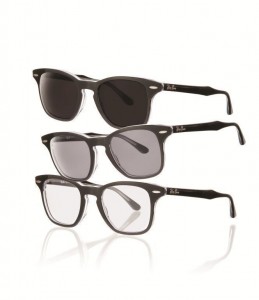Transitions Lenses 1.74
The popularity and desirability of Transistions® lenses have made them one of the most commonly-ordered lenses coatings amongst all coating options.
1.74 Transitions Lenses
 Those who require a strong prescription for their corrective eye-wear and seek to reduce the thickness and weight of their lenses often turn to 1.74 high index lenses to accomplish this goal. Combining the two options – 1.74 high index lenses with a Transitions® coating – can be somewhat of a task.
Those who require a strong prescription for their corrective eye-wear and seek to reduce the thickness and weight of their lenses often turn to 1.74 high index lenses to accomplish this goal. Combining the two options – 1.74 high index lenses with a Transitions® coating – can be somewhat of a task.
Transitions®, or photochromic, lenses offer the convenience of clear, “regular-use” prescription eye-wear and prescription sunglasses, all rolled into one package – one pair of eyeglasses that meet all your light-blocking needs. Indoors or at night, photochromic lenses remain perfectly clear; in fact, there’s no way to differentiate photochromic lenses from non-photochromic lenses when in this clear state. Taken into sunlight, however, the UV rays convert the molecular coating on the lenses and cause them to automatically darken, effectively turning your “regular” glasses into sunglasses.
This darkening effect also adjusts in direct proportion to the amount of available UV light. Walk outside on a somewhat overcast day, or a dawn or dusk – anytime sunlight is present in only trace amounts – and your lenses will adjust only partially, providing just the right amount of tint to protect your eyes from the sun in a low-light condition. In full or direct sunlight, however, the lenses will darken to their full extent – again adjusting to the present UV light to give you full protection and comfortable vision against harsh glare.
As the present UV light decreases, the lenses lighten, and when UV light is completely absent, the lenses revert to their fully-clear state. This process continues over and over again, your lenses automatically adjusting to just the right tint to compensate for the sunlight they encounter and back to clear when no sunlight is present. It is this versatility – not to mention the convenience and savings of only having to buy and wear one pair of prescription eyeglasses – that accounts for the mass appeal of Transitions® lenses.
1.74 high index lenses are popular with a smaller segment of the corrective eye-wear-wearing population, but they can be indispensible for those who require strong prescriptions. Such prescriptions can necessitate lenses that are thick enough to extend beyond their frames and distort the look of the eyes, magnifying them so they appear out of proportion to the face. Thick lenses can also be heavy, leading to slippage, nose indentations, fatigue when worn for long periods of time, and a limitation on the type and style of the frame they fit into. 1.74 high index lenses use far less material to form the curve of a strong prescription, leading to lenses that are lighter and far thinner.
 The trick in combining the two is finding a lens provider that can supply both. Transitions® coatings are often incompatible with the manufacturing process of high index lenses, and depending on the lens cut, shape, and the type of frame you order, you may not be able to find a manufacturer that offers 1.74 high index lenses with a Transitions® coating. You may need to alter the styles of lens or frame you select if you wish to combine the two eye-wear technologies.
The trick in combining the two is finding a lens provider that can supply both. Transitions® coatings are often incompatible with the manufacturing process of high index lenses, and depending on the lens cut, shape, and the type of frame you order, you may not be able to find a manufacturer that offers 1.74 high index lenses with a Transitions® coating. You may need to alter the styles of lens or frame you select if you wish to combine the two eye-wear technologies.


Leave a Reply
You must be logged in to post a comment.